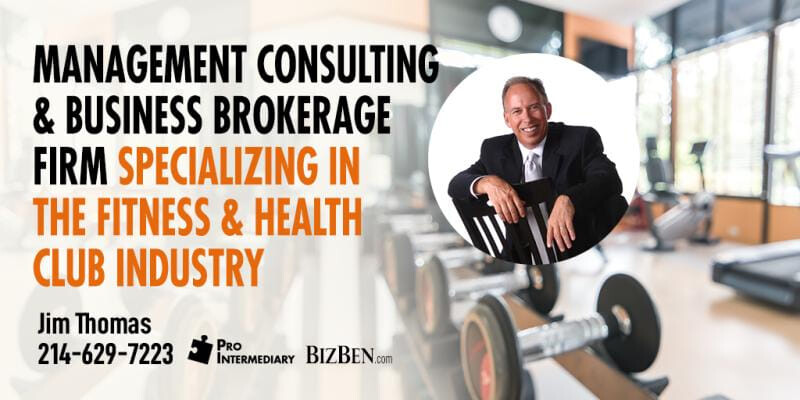Reposted with permission from simplegym.io
Every gym needs legal documents to operate legally and protect themselves. Here are 7 essential documents your gym needs, and a free download link (PDF & Word) for each.
Most gym owners didn’t start their gym to become paper pushers. The opposite in fact. Despite that, there are a few key documents that every gym needs in order to administer their business, limit risk, manage staff, and maintain their gym space.
In this article we’ll cover the 7 essential documents every gym needs to use, explain why they’re important and how to use them in your gym, and finally, we’ll provide you with a free sample version that you can use to craft your own documents.
The 7 Essential Documents for Gym Owners
1. Member Liability Waiver
What Is It?
A liability waiver is typically a one or two page document in which new gym members acknowledge the risks of participating in training at your gym, the member (and their heirs) agrees to not sue you, your employees or your gym for injuries (or even death) which might occur because of those risks, and the member agrees to waive any claims they might have.
Typically a good waiver also includes a couple of other things, like making it clear that the member needs to communicate, in writing, any physical or mental limitations in their ability to fully participate before they start training. And it should have the member agree to any gym rules, that the gym isn’t responsible for lost property, etc.
What You Need To Know
A well drafted liability waiver is perhaps the most essential risk mitigation document any gym can have. So much so, we built signing and storing one for every member into the SimpleGym platform to make sure our customers get one on file for every member, every time.
Generally, waivers are very effective in preventing lawsuits against your gym for injuries. There are a few tips to make them more effective…
Make sure it’s well-drafted. Some states require very specific language to make a liability waiver effective.
Make sure it’s comprehensive. There’s a reason attorneys list ten things when it seems like just one would suffice. They are trying to prevent lawsuits from every angle.
Make it clear and voluntary. Courts don’t enforce waivers when the language is ambiguous or the person seems pressured into signing. Simply make signing a waiver a required part of joining the gym, make sure the document is titled in a clear and unambiguous way with normal font size, and you should be good to go.
Get it signed well before problems arise. You don’t want to be passing around a waiver after the injury has occurred. It looks bad, and it’s legally far less effective. Make the liability waiver part of all new member and guest signups.
Where To Get One:
Note on using our copy: Consider having an attorney look it over to make state or business specific tweaks to better suit your gym.
2. Operating Agreement
What Is It?
If you decide to form an entity (LLC, C-Corp, Partnership, etc.) to own your gym through, you’ll need an Operating Agreement for the entity. An operating agreement basically spells out the rules, regulations, accounting, and other details of how the gym’s entity will be run.
A good gym operating agreement should be simple enough for you to actually read and understand, while also being comprehensive enough to cover all of the essentials and how you plan to deal with unanticipated conflicts or problems, should they arise.
What You Need To Know
Most new gym owners typically go one of two ways: they dig in and dissect
every detail of their operating agreement, or they literally never even glance at it. Try to be somewhere in between. When you’re starting out, your operating agreement won’t make or break your business. Make sure it’s flexible and it covers the basics, and you’re all set. On the flip side, including very rigid requirements (like that you need a unanimous vote from all partners to do anything) can hurt a business long term, so again, leaving flexibility in the agreement is key.
There are a few specific guidelines we suggest you follow, at least early on, in crafting your gym’s operating agreement,:
Prepare for management disagreements. A successful gym will be around many years, if not decades. No relationship, whether personal or professional, lasts that long without any conflicts or disagreements. A system for handling those disputes in a straightforward way within the operating agreement, such as via a ‘majority rules’ clause for day-to-day decisions, and 75% vote required for big decisions like taking on business debt, prevents things from getting heated between partners down the road.
Clearly define non-compete and fiduciary duty. If a partner in the gym decides to start a clothing line that they want to sell in the gym space, who decides what price the gym should buy the clothing at? What if a partner provides legal or accounting services to the gym, do they need to offer it at a break-even cost, retail price, or something in between? How about if a partner gets approached by a big investor to start a gym of their own down the street, can they do it? And finally, what happens if a partner who you expected to run a number of classes, gets an offer to train at another gym for 2x the rate and doesn’t want to teach at your gym? These are the sorts of issues that can cause tension and resentment between partners. So deciding on this in the abstract before there’s an actual heated conflict, and putting it in your operating agreement, will avoid a big source of intra-partner fighting.
Prepare for raising capital. Gyms typically need to raise capital once or twice in the life of the gym. That might be taking on an investment from new or existing partners, or taking a bank loan for expansion. Business partners often feel pretty differently about how much debt is appropriate to carry, or whether to admit a new partner and on what terms. A good operating agreement spells out the procedures for deciding all of that ahead of time before partners’ emotions are heated.
Define how to value the entity, and how to sell. If you have multiple partners, chances are, one of you is going to want to sell some or all of your ownership interest at some point. Selling shares in a gym isn’t like selling shares of Coca-Cola on the New York Stock Exchange. First you’ll need to decide on a valuation method (there are a few of them), then decide whether partners can sell to anyone or only someone the other partners approve of, whether the other partners get the right to buy them out first, etc. All of these decisions are better made up front, and clearly spelled out in the Operating Agreement.
Where To Get One:
Note on using our copy: Consider having an attorney look it over to make state or business specific tweaks to better suit your gym.
3. Instructor Contract
What Is It?
Moving from a one person operation to having a non-owner teach classes is a big step in the life of a gym. Unfortunately, when you add someone to the mix that isn’t an owner, you start to encounter a whole host of questions you’d never even considered. These questions range from pretty obvious ones, like, “How much and when does an instructor get paid?”, and “What are an instructor’s duties in maintaining the gym?” To more detailed questions, like, “Does the instructor need to maintain their own liability insurance?”, and “Can the instructor write about the gym on Facebook?”
A well written agreement for an instructor should spell out the answers to these sorts of questions in straightforward language, and serve as a quick reference for both you and the instructor to use when questions arise.
What You Need To Know
The key to good long-term relationships with your staff is setting clear expectations early. People hate when they feel like things change on them midstream. So take your time and think through details, like what clean up responsibilities an instructor has from the get-go, and make sure those responsibilities are spelled out clearly in the agreement.
There are a few specific guidelines we suggest you follow, at least early on, in crafting your gym’s Instructor Contract:
Require any injuries or dangerous conditions to be reported, in writing, immediately by all staff in an incident report. If you aren’t aware of problems you can’t fix them. And in the case of needed maintenance, if someone gets hurt by something that has been an unreported issue for months, you could be accused of negligence.
Require a criminal background check in your agreement. There are companies that will provide a background check for relatively cheap. And given that instructors will be working, largely unsupervised, in a position of power and potentially with minors, it’s better to be safe than sorry, by knowing the instructor’s criminal history.
Control your brand. If you want to enable instructors to publish things on social media about your gym, that’s fine. But make sure your agreement gives you the right to exercise veto power over anything published about the gym by staff.
Have a clear policy for substitute instructors. You don’t want a teacher calling in their semi-qualified friend at the last minute because they aren’t feeling well. Instead, have your agreement clearly define who is qualified to be called in as a substitute, who isn’t, and the procedure for doing so.
Where To Get One:
Note on using our copy: Most gyms hire instructors as independent contractors, as opposed to employees. There are a number of laws and tradeoffs that determine which is appropriate for your unique gym, but assuming you end up going the independent contractor path, that matches the sample agreement we’ve provided.
4. Incident Report
What Is It?
If an injury, assault, physical damage, or other incident occurs at your gym, you want a clear policy and procedure for handling such incidents, and to
make your staff familiar with that procedure. That might include, for example, running through a medical exam checklist to determine whether an EMT should be called, or calling the police in the event of any sort of physical altercation or damage. Whatever your procedure, however, it should certainly involve the completion of an incident report.
An incident report is a one or two page document that provides a contemporaneous account of what happened, documents why whatever action or lack of action was done at the time of the event, and gathers contact information of witnesses.
What You Need To Know
An incident report is typically admissible in court. That fact causes many gym owners to be hesitant to use one. The reality is, however, that an attorney constructing a lawsuit against you would prefer a vacuum of information over detailed factual information contemporaneously made in an incident report. A detailed incident report prevents an unscrupulous attorney (or their client) from crafting a story about the incident that makes your gym sound much worse than reality.
In the event of a lawsuit, not only does this incident report provide for a more accurate portrayal of what actually happened than relying on people’s memories many months later, it also demonstrates that your gym takes injuries and incidents seriously and justifies why a specific action or inaction was taken. A few quick guidelines we suggest following:
An incident report is best completed after the situation has stabilized, but while the incident is still fresh in the minds of your staff and any witnesses. So make it part of your staff’s incident procedure to complete one as soon as feasible after the event.
An incident report is about conveying facts, not opinions. Instruct staff to be as detailed and accurate as possible. But if they aren’t a medical professional, they shouldn’t attempt to diagnose the injury, just report on the symptoms they’re actually witnessing. Similarly, staff shouldn’t report things that they hear second or third hand, only what they’ve personally witnessed. If someone else saw something, tell staff to ask that person to write what they actually saw down, and list them as a witness on the Incident Report.
Where To Get One:
Note on using our copy: Consider having an attorney review and tweak our sample to make gym specific tweaks for your gym.
5. Equipment Maintenance Log
What Is It?
There are a lot of things that need to be serviced, cleaned, or maintained in a gym. From simple things on a regular cleaning schedule like mats and bathrooms, to more complex semi-annual maintenance like water heaters and air filters.
You as the gym owner simply can’t keep all of these things in your head. And even if you could, you’d have no record that they were actually completed in case you needed that documentation (e.g. for a warranty, insurance claim or lawsuit). That’s why having an Equipment Maintenance Log is essential.
An Equipment Maintenance Log is just a one or two page form, that you note, contemporaneously, every time some sort of maintenance or repair happens to a particular piece of equipment.
What You Need To Know
If you want to make a warranty or insurance claim, you’ll be in a much stronger position when dealing with the insurance company if you have a completed maintenance log in place.
Unfortunately, maintaining a log is the sort of policy that is hard to implement once the gym is already up and running and staff are set in their ways. That’s why it’s so important to get these Logs in place from the get-go, and to post them in an easily accessible place that you can point any service provider to and require them to use whenever they perform service.
Consider stapling service invoices to the back of these maintenance log so that you have more detailed information about who performed the service, how much they charged, etc. without having to make the process of logging the service any more onerous.
Where To Get One:
6. Federal And State Tax ID
What Is It?
These two documents, your US federal tax ID (aka FEIN), and your state tax ID, are so interrelated we’ve combined them here. Your state and federal Tax IDs enable your gym to pay federal and state taxes, and are typically required for you to be able to open a bank account, create payroll, and for performing other administrative tasks.
What You Need To Know
If your gym generates any revenue, you’ll have to pay federal and in most cases state taxes each year. Your gym will file its own tax return each year which spell out how much you owe in taxes, but the government also keeps a ledger of how much they expect in taxes from your gym. The government keeps that ledger accurate by requiring other businesses your gym deals with (including banks) to track and report transactions with your gym by its tax ID. In effect, that means that as a business owner, you’ll repeatedly be asked for your federal Tax ID by suppliers, landlords, and other businesses with whom your gym contracts. So keep these numbers handy because you’ll need them a lot in the startup phase of the business, but also every time you get a contract with a new supplier or service provider.
The government tries to make it very easy to pay them taxes, so getting a Tax ID for your gym is shockingly fast, easy to get, and free. Just go to the right website, plug in some basic information about your business entity type, address, how many employees you currently have, and one or two other pieces of information, and in most cases you’ll immediately receive a PDF with your federal and state tax IDs.
Where To Get One:
For a Federal Tax ID (for paying your federal taxes) visit the IRS application website here.
For your state Tax ID (for paying any state taxes) visit your state tax authority, a 50 state list is here.
7. Entity Registration
What Is It?
Most gym owners choose to form a business entity to operate their gym out of, (typically an LLC, a corporation, an s-corporation or a partnership). To form an entity, you’ll need to register your company with a state. When you do that, the state will provide you with a letter recognizing your company. You’ll need that Entity Registration Letter to open a bank account and obtain a Tax ID, to name just a few things.
What You Need To Know
The primary reasons for running your business out of a legal entity, are that a business entity gives the gym owners additional liability protection, it enables cleaner accounting, it’s necessary in order to take on partners or investors, and it looks professional to banks, suppliers and other businesses you’ll be contracting with.
In order to form a business entity (whether that’s an LLC, C-Corp, S-Corp, etc.) you have to register your company with a US state. You can actually choose from any of the 50 states to register your business in, but practically speaking, there are only a few choices that make any sense.
The three big considerations on which state to register your gym in are:
Registration Cost: Some states charge as little as $100 per year to maintain your business registration, others are over $1,000.
Laws: If your gym is sued, typically the laws of the state your business is registered in will apply. Some states have a reputation for having well-established business friendly laws (Delaware, Nevada, & Wyoming in particular). So if your state doesn’t have as business-friendly of a reputation, that’s a big reason to consider registration outside the state your gym is physically located.
Registered Agent: You have to maintain a physical presence in the state your business is registered in. Obviously, if you’re based in Florida but register your gym’s entity in Delaware, you’re not going to maintain a full-time office there. Instead, you’ll hire a registered agent. There are tons of registered agents who charge anywhere from $25 to a few hundred dollars per year for acting as your company’s legal representative in the state. In practice, they don’t really do anything beyond forwarding to you any legal notices your gym receives.
So, in practice, most gym business owners just end up registering in the state their gym is physically located, whereas others choose from among the more business friendly states of Delaware, Nevada or Wyoming.
Where To Get One:
Visit the Secretary of State’s website in the state you want to register with. A list of all 50 secretary of state websites here.
Once you’ve registered your gym with a state’s Secretary of State office, you’ll receive a letter from the state, with a registration number.
Disclaimer & Terms Of Use
Prior to using these forms, please consult with an attorney or other expert knowledgeable in the laws of the applicable jurisdiction and the specific intended use of those forms.
All forms available for download through SimpleGym are general in nature; are not based on the laws of any specific state or other jurisdiction but rather general principles of law applicable throughout the United States; and should only be used after first consulting with an attorney or other expert knowledgeable in the laws of the applicable jurisdiction and the specific intended use of those forms.
This article is intended for informational purposes only. Neither SimpleGym LLC, nor its author, offer, nor intend to offer, professional or legal advice. Consult with your attorney for individualized professional advice suited to your unique gym’s needs.
An Outsourced CEO, Jim Thomas is the founder and president of Fitness Management USA Inc., a management consulting, turnaround and brokerage firm specializing in the gym and sports industry. With more than 25 years of experience owning, operating and managing clubs of all sizes, Thomas lectures and delivers seminars, webinars and workshops across the globe on the practical skills required to successfully to overcome obscurity, improve sales, build teamwork and market fitness programs and products. In addition, his company will help with financing for new or existing gyms. Visit his Web site at:www.fmconsulting.net or www.youtube.com/gymconsultant.






